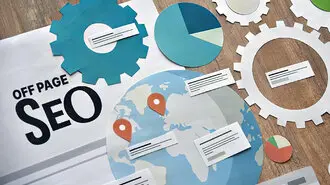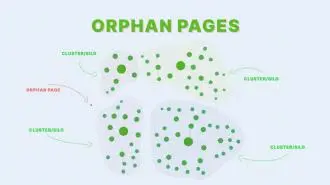Search engine optimisation (SEO) is like playing a game that doesn’t have an ending or a way to win. It’s not like something you can do once and then sit back and relax after winning. Instead, it’s more like every time you play, things get faster and faster or better and better.
You have to work on it to reach those higher levels continually, and with each level, your gameplay improves. If you stop working on your SEO strategy at any point, your online presence will likely be surpassed by other businesses actively working to improve search engine visibility. So you must always keep playing to keep improving.
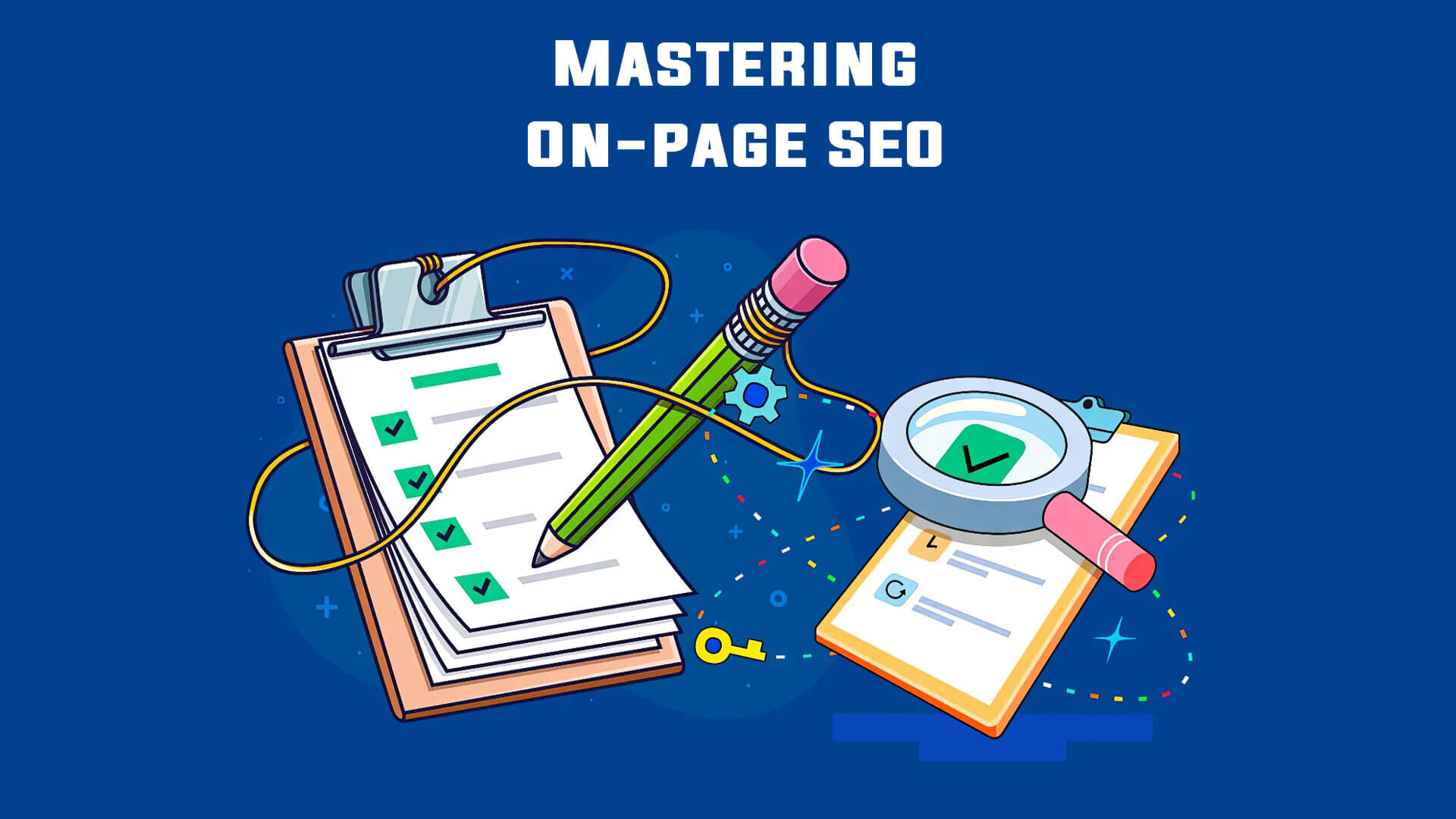
Like in games, various strategies can be utilised in SEO. Not everyone plays the same way, but different strategies can still help different players reach the same levels.
With that said, in this article, we will specifically talk about the on-page SEO strategy. There are various methods when it comes to SEO, but on-page SEO is the most important.
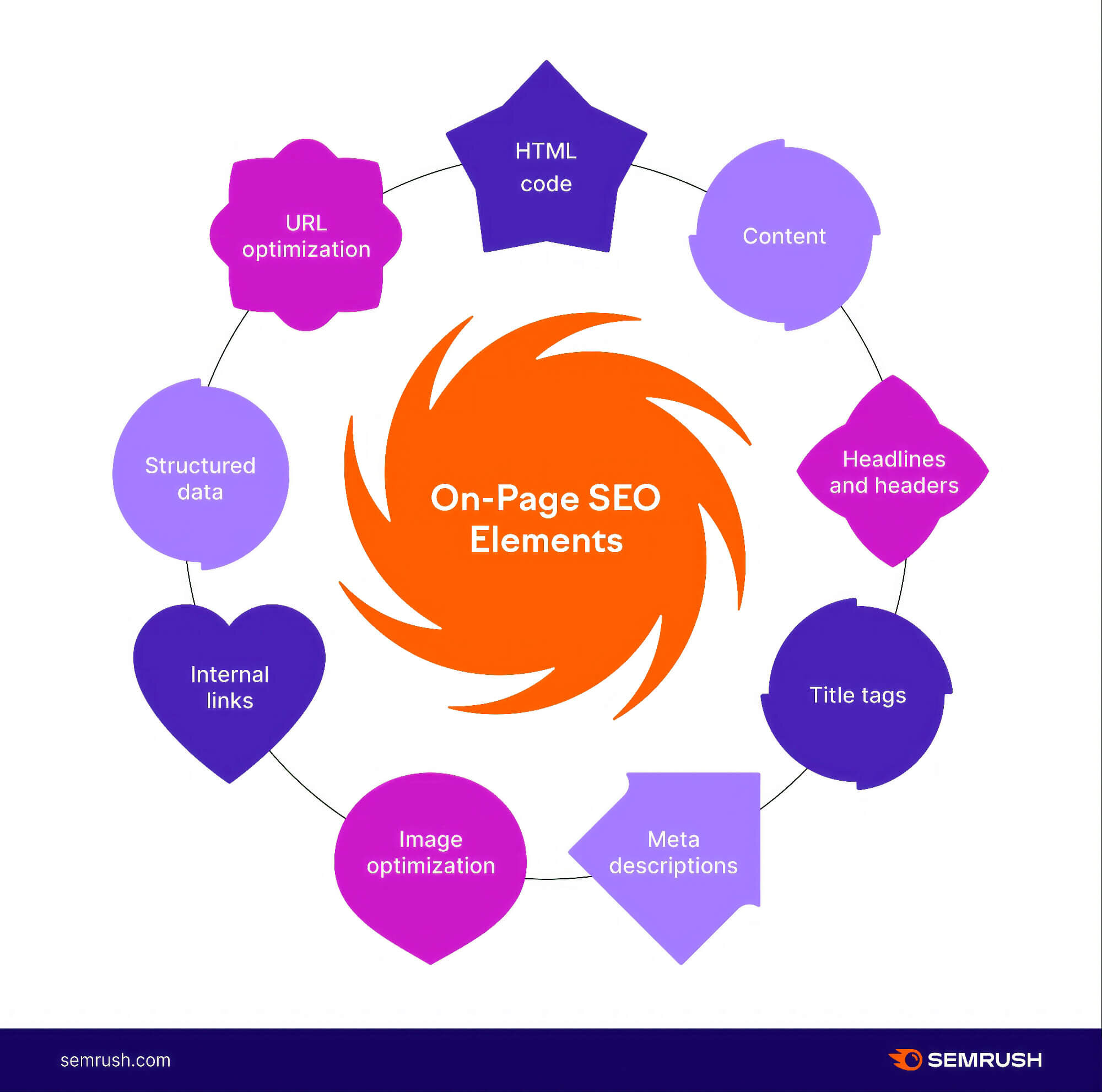
What is On-Page SEO
On-page SEO is about specifically optimising the web page content throughout your website. This type of SEO strategy facilitates higher positions in the pages SERPs of search engines and receives more traffic to your web pages.
Some people like to refer to this kind of SEO as internal. The different type of SEO is off-page or external. This would include all strategies that optimise your rankings outside your website, such as using backlinks on other websites or social media.
Want to receive updates? Sign up to our newsletter
Each time a new blog is posted, you’ll receive a notification, it’s really that simple.
Why Is On-Page SEO Important?
Both on-page and off-page SEO are important, yet on-page SEO gives you more control. This control allows for better chances to boost your search engine rankings and drive more traffic to your site. That’s why many folks see on-page SEO as even more crucial than off-page.
Search engines, especially Google, heavily rely on keywords and on-page elements to see if a page fits what users are looking for. When your web pages are optimised well, Google’s more likely to show them to users, meaning higher search rankings.
Google’s algorithm is always changing and getting better. That’s why keeping your on-page SEO up-to-date is crucial for maintaining organic traffic. If you don’t regularly optimise, your site might fall behind, and competitors could overtake you.
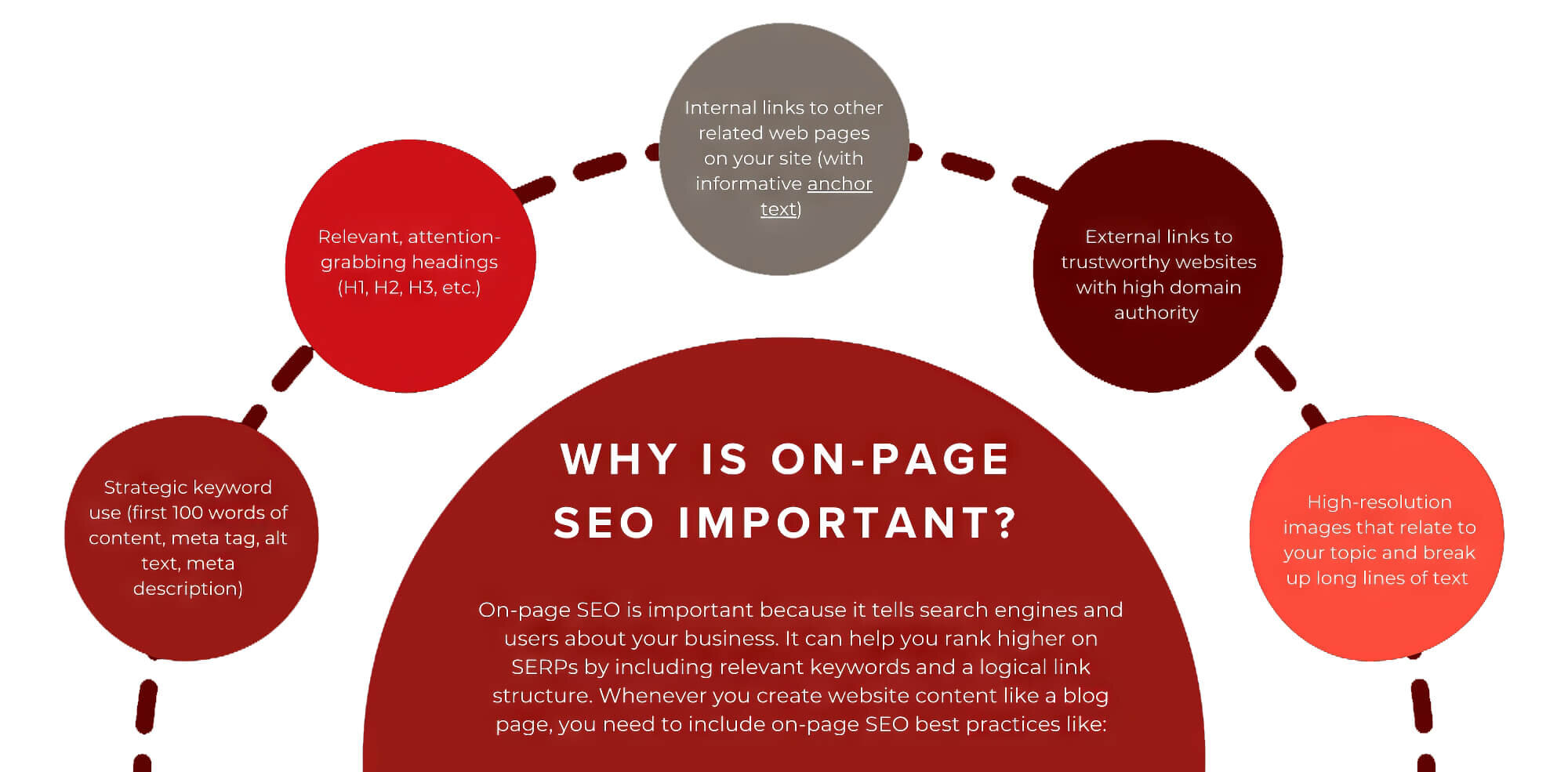
Best Strategies for Mastering On-Page SEO to Boost Your Website’s Visibility
Digital marketing, especially SEO, can get overwhelming at times. Innovative strategies emerge daily; myriad aspects need consideration for every action you orchestrate. So, to guide you, we’ve put together a list of the most important things to do to help you master your on-page SEO.
1. Have a Plan
Before working on your SEO, you must develop a plan that includes your goals and what you hope to achieve. Without a plan, you might find yourself aimlessly trying to improve your website only to find you aren’t achieving the desired results.
This is why SEO project management is so crucial. The three key elements of SEO project management are:
- Creating a structure or a framework for your SEO strategy: Creating a structure or framework for your SEO strategy is like creating a plan. You’ve got to have a plan to ensure everyone working on the project knows what to expect and how to achieve the desired end goal.
- Having the right tools to execute your strategy: There are numerous tools and resources available to assist with SEO strategies, such as analytics tools, keyword research tools, and even project management tools. These can significantly improve your efforts and help you achieve desired results more successfully.
- Keeping the lines of communication open: Being able to communicate effectively is critical, especially for those who are directly working on your SEO strategy. Communication tools like Slack, for example, ensure everyone can connect and discuss the SEO project quickly and without any roadblocks.
These elements will help everyone working on your SEO stay on the same page. By understanding your goals, your SEO strategy will remain on a direct path to success.
2. Conduct a Root Cause Analysis
Before diving into optimisation, take a good look at your current website and pages. If you’ve got pre-existing content, doing a root-cause analysis can highlight what’s working and what needs improvement.
A root cause analysis (RCA) is a helpful process that enables you to uncover the underlying factors of an issue or situation. In this case, an RCA would help you identify what on your website delivers the rankings and what doesn’t.
Steps for performing an RCA for SEO purposes can include:
- Identifying the problem: What is working toward helping your rankings, and what isn’t?
- Collecting and analysing data: Gathering all relevant information about the issue and determining possible causes.
- Conducting tests: Running simulations or other tests to verify the accuracy of the root cause of the issue.
- Implementing solutions: Using SEO, best practices to boost your rankings.
- They are verifying results: Collecting data and running tests again to verify that the solutions implemented are working.
3. Improve Your Local SEO Rankings
Another key part of improving your on-page SEO is ensuring your local SEO works for you. Your local SEO helps you create awareness for your business’s physical location.
Once people know that you exist in their area, this will help you draw more traffic to your online website. Factors that can help you boost your local SEO rankings include:
- Ensuring you have a Google My Business listing;
- Getting verified with Google My Business categories;
- Upload photos to your Google My Business page;
- Encourage customers to leave Google reviews;
- Get high-quality sites to link to your website (backlinking).
4. Boost Page Load Times
One of the top on-page SEO considerations is your page’s speed or load time. Fast-loading pages are a confirmed ranking factor for Google. If your site isn’t mobile-friendly or loads slowly, your rankings could take a hit.
Google offers a tool known as Google Search Console to assist businesses in determining the speed of their pages. It also provides actionable advice for what you can do to make your pages load faster. This is the PageSpeed Insights tool.
Typically, your page speed can be significantly improved by adjusting your images and videos. Image and video compression (reducing size) can significantly improve the time it takes to load your pages. You also want to use the right image formats, such as PNG and JPEG, as they work well with responsive design and are the easiest to compress and load.
5. Conduct Keyword Research
Incorporate relevant keywords in your content by conducting research keywords, as they are one of the primary factors that influence Google SERPs. Using relevant keywords in your content is crucial, as it signals to Google whether your content is related to what your target audience is searching for.
So, you want to identify the most important keywords and keyword phrases that are relevant to the information, product, or services you offer. Use those keywords in your content. Numerous keyword research tools can help with this, such as SEMrush, Ahrefs, Moz, and Google Keyword Planner.
6. Strategically Place Target Keywords
Keyword research is only the first part of having a quality keyword strategy. The second part is knowing where to place those keywords in your content to get the best results. This is where it’s helpful to create a keyword map.
A keyword map is essentially a map of your website and where keywords should be placed based on the keyword’s relevance to the content on the page. For example, if you offer multiple home improvement services, you don’t want to place your roofing keywords on pages primarily about window replacement.
Beyond creating a map for your keyword placement, there are generally some areas on relevant pages where it is most important to include your keywords. This comprises user-friendly elements such as page titles, H1 headings within the inaugural paragraph of your pages, and H2 and H3 subheadings.
Placing keywords in these areas will help Google gain context about your pages and better match your pages to user search intent.
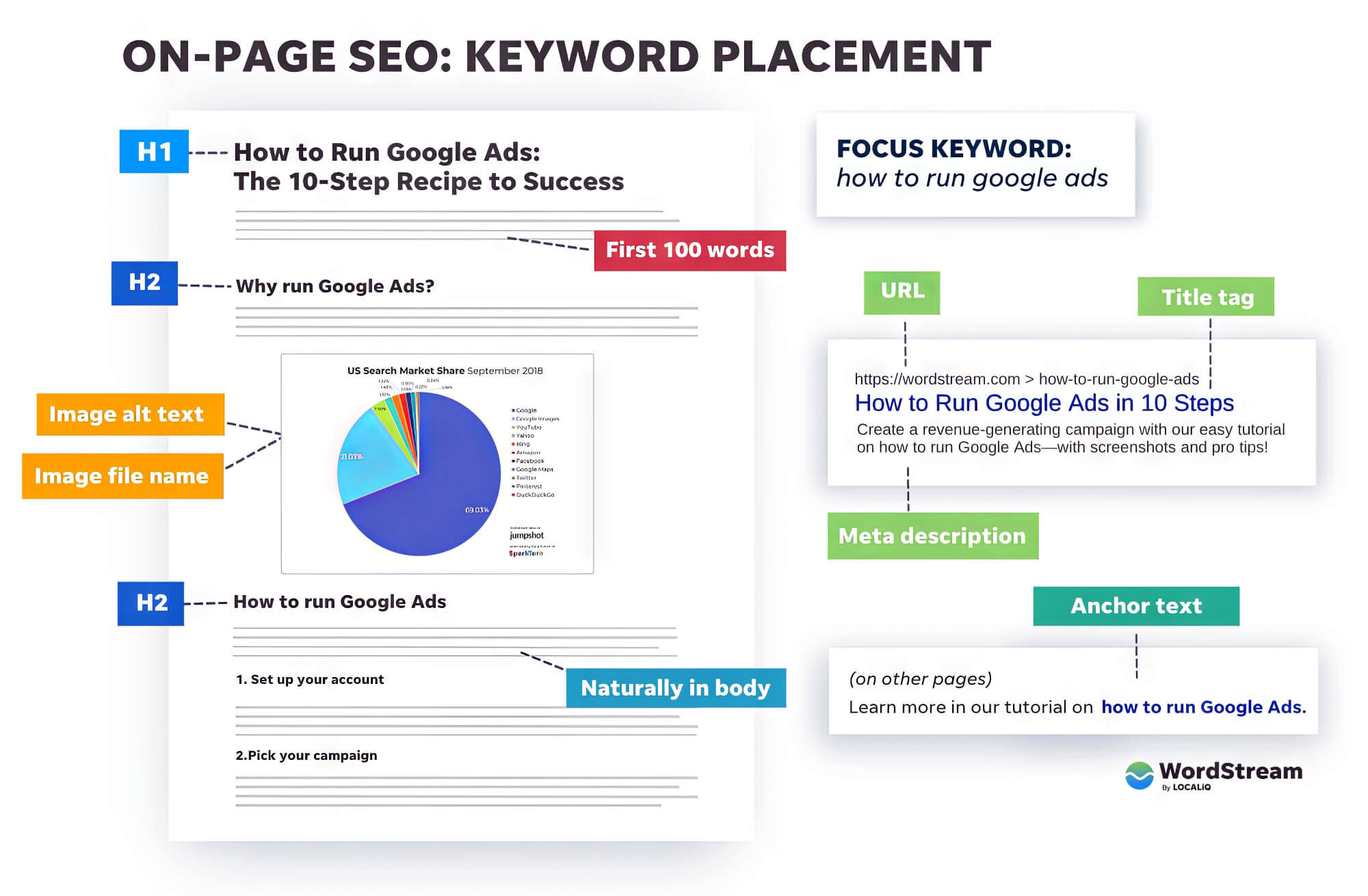
7. Optimise Title Tags
Title tags are part of the HTML code for your page, and they indicate to Google what the title of your page is. That title will then be displayed in search engines and browser tabs. Title tags are important because they inform Google about your page and influence whether a user will click on the link to your page.
Title tags should be kept brief — between 50 to 60 characters. You should include your target keyword for that page in the title tag. Your title tags should be unique so the page’s purpose is clear to Google and its users.
8. Utilise Engaging Meta Descriptions
Compelling meta descriptions, a type of meta tag, are another vital HTML element that can significantly influence your rankings. A meta description provides a brief summary of the content on a webpage. It will appear in search engine results below the title of your page.
Google doesn’t base your rankings on your meta descriptions, but these descriptions can influence whether or not a user will click on your page. So, they work more as an indirect influence that can help drive traffic to your website.
The best meta descriptions are around 120 characters, including the target keywords, use an active voice, and have a CTA (call to action) to entice users to click.
9. Write High-Quality Content
You must create quality content for your website, be highly informative and engaging, and penned in a well-written manner. Content that provides value to the reader and uses keywords naturally, where you avoid keyword stuffing without keyword stuffing, will aid your page’s SERP performance.
So, make sure you are writing content that users want to read. It should be informative but also reader-friendly. In other words, you don’t want it to sound so informal, like a textbook, that it’s boring, but you still want to include important information so that users get something out of reading it.
10. Use Content Categories
Site structure is often ignored in SEO strategies. However, it can also affect how well your web pages rank. If your website needs to be clearly structured, then Google will have a lot of work to read your pages and understand what they are about.
One of the best ways to create a clear site structure is to create content categories on your blog page. Organising your blog posts into categories helps users more easily navigate your site and tells Google which blog pages are most relevant to a user’s search intent.
11. Structure Your Pages with Headings and Subheadings
All your pages, not just your blogs, should also utilise certain elements to be easier to read. Headings and subheadings allow users to skim your content and understand what it’s about easily. They also allow Google to understand the hierarchy of your pages, which, again, will help the algorithm match your pages to a user’s search intent.
Instead of having a title and paragraph after paragraph of dense text, break up your content with headings and subheadings (H1s, H2s, H3s, etc.). Using bullet points and lists in your content can also make it easier to read and digest for users.
12. Include Internal and External Links
Link building is like the foundation of the internet and SEO, and it plays an important role in Google rankings. Google’s algorithm heavily emphasises anchor text utilised in links, so you must use them in your content.
Include a balanced mix of relevant internal links and external ones within your content to ensure a well-balanced SEO strategy. Internal links are hyperlinked text that links to other pages on your website. So, suppose you have a page about window replacement, but you mention roof repairs. In that case, you can insert an internal link that directs the user to another page on your website, specifically about roofing.
External links are hyperlinks that point to other sites. You should use external links to back up facts or give your readers more information. This adds value to the reader and helps build the authority of your website (so long as you are linking to other high-authority sites).
13. Optimise Images and Videos
Regarding user experience (UX), which Google increasingly prioritises, accessibility is crucial. Not everyone can access information on the internet the same way, such as users with disabilities. So, it’s important to ensure all of the content on your pages can be read by users who utilise assistance devices, such as screen readers.
For example, someone with visual impairments may be unable to see your page’s videos or images. This is why you must optimise them with alternative text (known as alt tags). Alt text briefly describes what the image or video depicts so users who can’t see the image can still get an idea of what the content is showing.

Don’t Forget About Cybersecurity
Indeed, cybersecurity has an effect on your SEO rankings. It’s essential to use descriptive and accurate meta tags to ensure security. Aside from matching blog post content to user search intent, Google also prioritises the safety of users. As such, the Google algorithm considers a couple of safety factors when ranking content.
For example, if your website is hosted on a non-HTTPS protocol, Google will consider it unsafe and block it from ranking. If your website loads slowly, Google sees this as a potential sign of an insecure website, which will also harm your rankings.
If your website has also had problems with data breaches and malware, this will discourage users from visiting your site, which can indirectly affect your rankings and site traffic. So, it’s essential to implement quality cybersecurity strategies when working on your on-page SEO.
Such strategies can include:
- Conducting regular backups;
- Regularly updating your software;
- Limiting admin privileges and who has access to what;
- Conducting regular searches for potential vulnerabilities and threats;
- Making full use of security features;
- Implement the latest cybersecurity tools to help you scan and detect malicious content.
The safer your website is, the more users will trust you. Building user trust is crucial to providing a safe and engaging experience that will keep users returning to your website. This will also prove to Google that your site is safe, which means it will not block your site from ranking in search results.
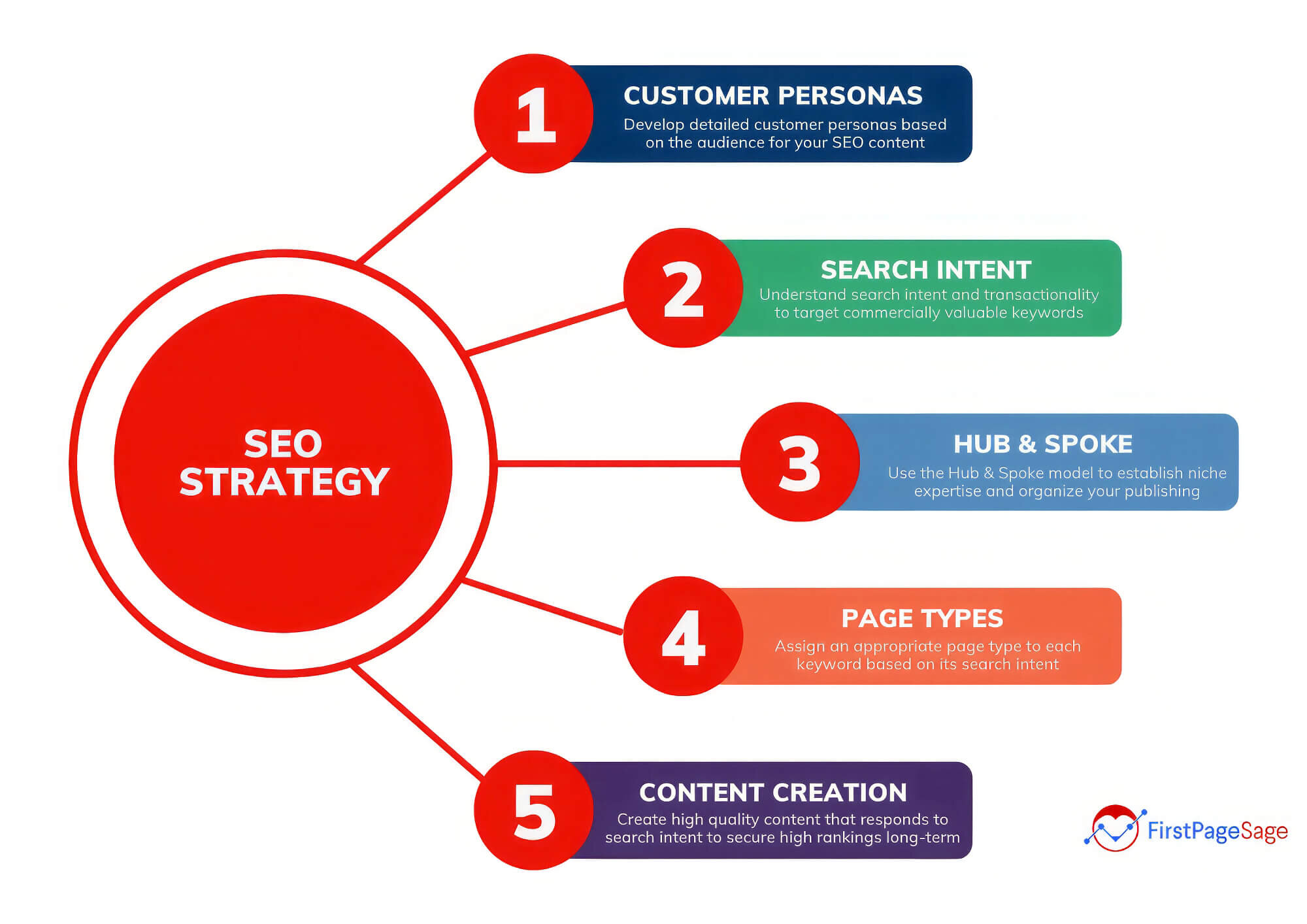
How to Retain Your High Rankings
Once you’ve achieved the rankings you desire, you will need to do things to stay on top in Google SERPs. Again, a quality on-page SEO strategy is not just a one-and-done deal. To secure a top position, you must produce engaging content and consistently maintain rankings.
Below are a few tips to help you keep your high rankings:
- Regularly update your content so it isn’t filled with outdated information.
- Keep an eye on your competitors.
- Diversify your outbound links and be cautious of the quality of links that you attract.
- Regularly check your site speed to ensure it is loading correctly.
- Maintain a regular posting schedule on your blog.
Elevate Your Rankings with On-Page SEO Mastery!
When it comes to SEO, you should always stay on your toes and update. When your site becomes stagnant and stops optimising, you will lose high rankings and remain caught up in the competition. So, it’s crucial to create a schedule that helps you stay on top of what you need to update regularly, thereby maintaining your website’s visibility.

